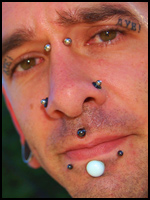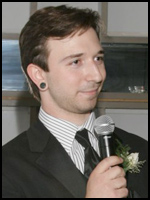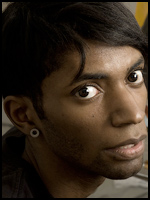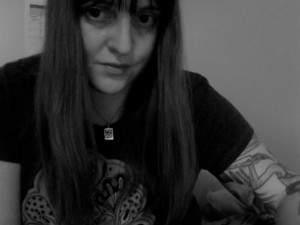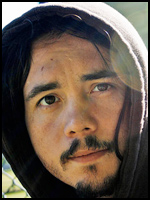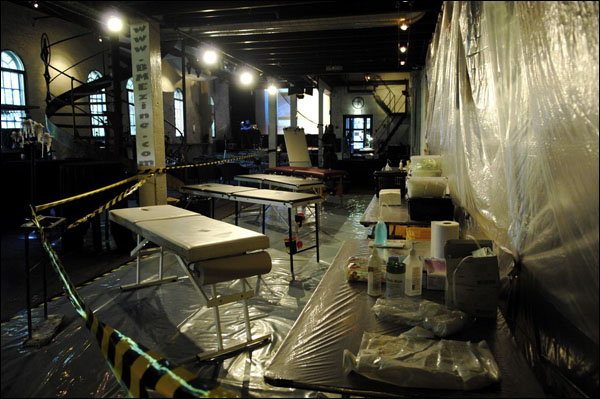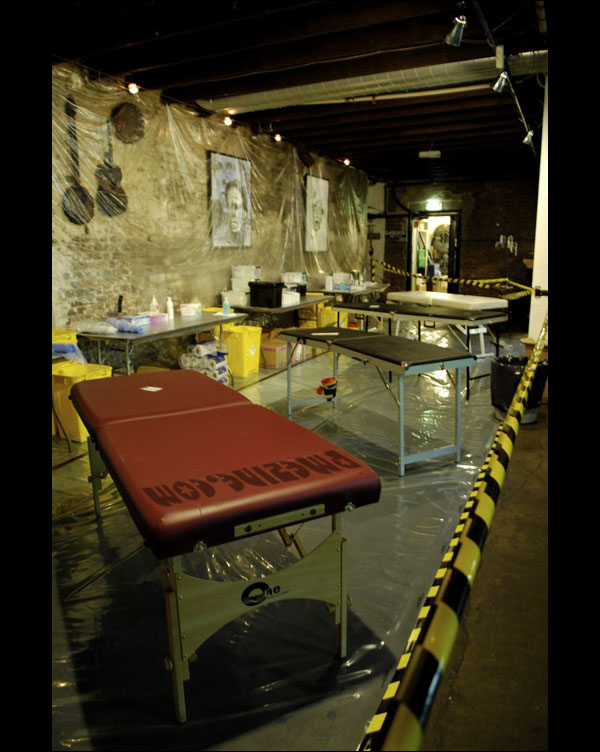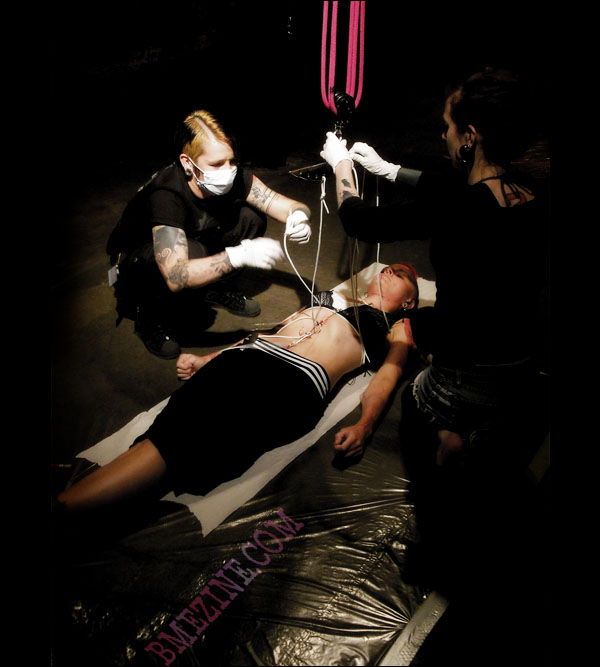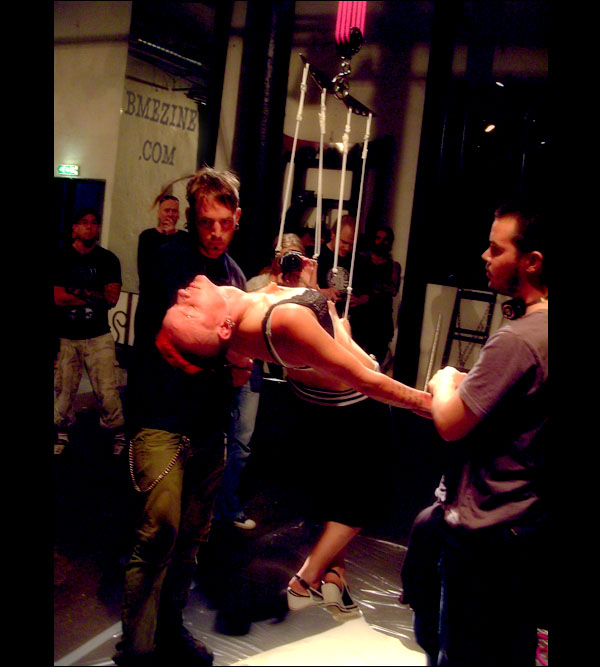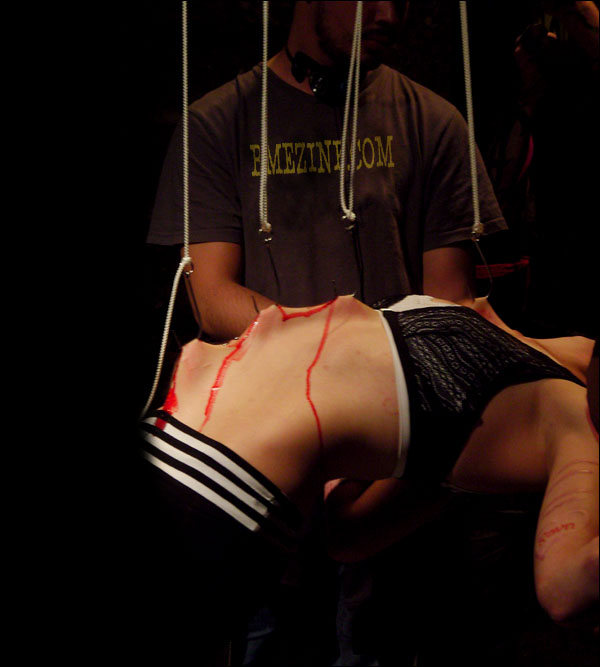By Darrin Fowler
Each year, the IAM community comes together to award $1000 USD college scholarship to a deserving member of our community. Available to all IAM members worldwide, this year marks the third year we’ve been able to help a promising student cover the costs of college.
The last decade has seen huge changes in the world of body modification. Ten years ago, tongue splitting was virtually unheard of. Now, it’s almost commonplace. Ten years ago, branding was done almost exclusively, now it’s often done using electrocautery, laser, or even focused solar rays. Ten years ago, implants were only done using small beads of steel or, occasionally, teflon. Now, custom-carved, three-dimensional forms, in steel, titanium, teflon, or silicone are much more popular. Ten years ago, surface piercings rarely lasted long enough to heal, and staples, surface bars, transdermals, and microdermals were yet to be invented.
The last ten years have seen a lot of changes. For this year’s scholarship essay, we asked applicants to look not to the past, but to the future. This year’s scholarship essay question,
“What do you believe is the future of body modification? Feel free to discuss any aspect of this question, including types of modifications, procedures, technology, licensing, society’s acceptance of modifications, or any other aspect.”
… brought some unexpected responses. With so many changes in the last decade being focused on new types of body modification and new procedures, and increasing scrutiny likely to ramp up regulation and licensing of the body modification industry, it’s interesting that all of the essays we received looked so heavily at the societal acceptance of body modification.
Although unexpected, perhaps this focus by today’s college students can teach those of us who have left college a decade (or longer) ago something about where things are going. While we’re looking at new, improved procedures, many in their teens and early twenties are seeing a future of increasing acceptance of our community. While we’re leading the way on new types of modifications, they’re leading the way in getting those same modifications accepted by society.
The IAM College Scholarship is scored each year based on a variety of factors, ranging from school grades, community involvement, and the individual’s role in our community, in addition to the final essay, of course. This year’s competition was the closest yet. In the end, though, a winner emerged. This year’s winner, majoring in psychology and gender studies at Connecticut College, has already done her first body modification-related psychology research project, and I’m sure we can all look forward to her representing our community favorably in her future professional publications.
Before announcing the winner, a brief commercial break…
The IAM College Scholarship is funded entirely by donations from members of our community. Donations of any amount can be sent via PayPal using the link below:
Donate Here
Congratulations to this year’s winner, Sahra James Wallace aka IAM: Republik.
United Under Change: A Sociocultural Analysis of the Future of the Body Modification Industry
Sahra James Wallace
May 2008
I. Setting the Stage: Normality As A Mediator Between Body Modification and Social Change
German philosopher Arthur Shopenhauer once wrote that “Change alone is eternal, perpetual, immortal.” Be it fast or slow, large or small, everything around us is constantly in motion and never the same. We change as a reaction to the change in our environment, which then changes in return. As we age, we allow our experiences to shape all aspects of our lives, including the way we think, the way we speak, and our physical bodies. Indeed, body modification in some form or other has manifested itself in almost every human society imaginable. I will pause here to clarify that body modification as I define it for the purpose of this analysis is any intentional, semi-permanent or permanent physical change made to one’s body.
Though people will cite a variety of reasons for modifying their bodies, ultimately it can be seen as a tool which enables us to live the lifestyle we choose, to fill the space we wish to fill. No matter which form of body modification one practices, it affects both the way one perceives oneself and the way in which one is perceived. It is real, visible and tangible not only to the individual who modifies himself, but to the other members of that individual’s community. At this conceptual level of analysis, body modification would seem to anyone a sensible and logical way of adapting to the ever-changing environment. It is only once society and culture is factored in that we begin to fully understand the current role the body modification industry occupies – an essential part of predicting the community’s future.
Normality is a concept with which most modified people are painfully familiar. Unfortunately, it is one of society’s most powerful and convincing creations, and it is used primarily to classify, stratify, and separate human beings. What constitutes normal versus strange is dictated by a series of esteemed institutions, currently holding the power to influence the direction of society to astounding degrees. Because it must self-perpetuate, and keep its power amidst the ever-changing social dynamic in which we live, these institutions depend on people believing as though they are necessary. Through a long and tumultuous relationship, these institutions have trained the average member of a substantial number of nations to adopt an essentialist and egocentric way of thinking. The result is such that to the modern human being, experience is so powerful that we cannot help but credit every one we have, thus allowing our surroundings to shape the way we change over time. By then inserting the concept of normality into the relationship between the individual and the environment, the media has given us a goal – something to move towards and strive for. On an intrapersonal level, this not only keeps an individual wanting the changes they make to result in a finite and definitive product, but it forces that individual to believe that they need the media in order to keep a grip on what is supposedly mainstream and popular, and thus normal, desirable, and correct.
When one considers that this dynamic is present in most every member a vast number of modern societies, a similar theme can be seen. Not only does the general public believe strongly in an unrealistic ideal, it has embraced the concept of “progress” and defined it as moving specifically towards that ideal. Here I speak of the classic American Dream, or whatever relative is present in other nations or cultures. Astounding numbers of Americans seek out the well known heteronormative, patriarchal, and domestic lifestyle, as well as partner to live it with. They do this seemingly without introspection, without any consideration for the fact that “normal” isn’t actually synonymous with “good,” and this lifestyle is absolutely not the most comfortable one for millions of people. Ironically, this much-desired social position is conceptualized as a stagnant state of being, as a potential repose from the fast-paced world in which we live. This is not so, and yet still they push on, striving even just to attain the appearance of having attained this ideal. Furthermore, in the interest of keeping up the guise of normality, people will reject what they consider not to fit into the cookie-cutter lifestyle they are trying to prove they live.
II. Where We Are: How the Dominant Way of Thinking Affects the Position of the Body Modification Industry in Modern Society
In the 1970′s, a shift in the way people were perceived was observed in which the popular discourse at the time ceased to regard people as human beings who simply did things which were “good” or “bad,” and began to allow the deviant practices someone engaged in to define their character. This change in perception of social deviance had marked effect in a variety of areas. At this point, the modern concept of a homosexual was born – previously, society had perceived only people who happened to engage in homosexual activity. The same is true for other forms of social deviance, and thus we see the roots of the modern concept of a modified person, one whose modifications play a pivotal role in their self-definition and the way in which they are defined by their peers. Though owning one’s social deviance was in some ways empowering, the present-day general public’s inability to see a fellow human being through the veil of body modification is responsible for the majority of the problems modified people face today.
Any modified person has had the uncomfortable experience of walking into some public place and having a non-modified person react in a noticeably negative manner. Our appearances taint even the simplest activities – grocery shopping, visits to the doctor, or impressing potential employers at a job interview. On a personal level, these interactions hurt and shock us. Unfortunately, all too many modified individuals will readily admit that they’ve grown desensitized to the sometimes constant barrage of ignorance and prejudice they experience on a daily basis. Though nothing can excuse disrespect, it is interesting to consider the function of this interaction on a sociocultural level. By expressing visible displeasure and disgust at a person’s modifications, a non-modified person is effectively distancing themselves from the modified individual, who has openly dared to defy society’s definition of normality and what is acceptable. Through this simple interaction, the non-modified individual is purchasing their own normality and effectively gaining a fleeting feeling of comfort and validation, while simultaneously juxtaposing themselves against the modified person, thus showing other members of society just how “normal” they are.
These types of interactions unfortunately form the bulk of the current relationship between the body modification industry and a variety of other entities. Though the size and scope of the interactions in question may change, they are still colored with too much misunderstanding, ignorance, and a unilateral drive on the part of the non-modified party to perpetuate normality. This, the present state and position of the body modification industry, is something which must be understood in order to properly discuss the future of the industry at all. Only once one has given credit to the dynamics which caused us to arrive at the status quo can one’s hopes for the future become reality – more importantly than vocalizing our goals for the community and industry is understanding how to attain them.
III. Where Do We Go From Here? Predicting the Future of the Body Modification Industry
The list of changes on the horizon of the body modification industry is lengthy. Most every member of the community has high hopes for the future. In this section of my analysis, I will briefly discuss just a few of the many specific changes the future can bring. I begin with a discussion on the potential changes within the community itself.
Within the industry, we have recently seen an increase in the popularity of types of modifications, such as tongue splits and 3-D subdermal implants. This phenomenon is especially meaningful considering the dissonance between the opinions of the various types of people who practice body modification. Having modifications doesn’t mean having an entirely open mind, and many modified people draw a seemingly arbitrary line between what they consider to be normal and what they see as strange. I see this as an issue just as significant as the misunderstanding and disgust that mainstream society harbors for our culture. Though we are fortunate enough to have witnessed a rise in the popularity of some modifications, the negativity and ignorance towards the wide spectrum of body modification procedures must be dealt with immediately in order to ensure a united and empowered community.
Yet another potential area of significant future change within the community lies in the development of new procedures and techniques. Specifically, I think here of the developments in the design of microdermal jewelry, which has undergone a variety of modifications and changes in the recent past. The techniques and jewelry design will undoubtedly continue to develop in the future, as will a variety of other modification procedures. The effect that continued change in this area will have on the members of the body modification community is a crucial one. The options available to an individual looking to modify his body are more numerous than ever, and as our knowledge of the human body and proper procedure technique continues to build on itself, we will be witness to an unprecedented influx of possibilities, thus further enabling us to utilize body modification as an effective and fulfilling way of changing in response to our changing environment.
What I consider to be the area most in need of change is that of our relationship with the non-modified world. In the future, we must address a variety of more comprehensive issues, all of which involve outside entities with which we currently have either strained or nonexistent relations. Having examined the social dynamics which have shaped the current position of the body modification industry, we are now better prepared to understand the role of the industry in society, and thus the potential directions in which we are able to move.
The first issue in need of attention is that of the dissonance between the modern body modification and medical communities. The scope of the procedures body modification artists agree to take on has been increasing, and will only continue to do so. Currently, the majority of the feedback we receive from the medical community is disdainful and negative, and there is little overlap between the two industries. The truth of the matter is that both establishments would benefit immensely from an understanding and positive relationship with the other. The result of the medical establishment crediting educated artists with a legitimate knowledge of anatomy, as well as the body modification industry allowing the medical community to offer objective scientific input as to techniques and procedures, would be an astounding shift in the interactions between the two. Patient-doctor relationships would most definitely improve, and more and more people would feel comfortable discussing safe and sterile techniques with their doctor, rather than feeling abandoned by the medical community and forced to attempt dangerous procedures on their own.
Another area which demands attention is that of organization and order. At present, the industry lacks definitive standards and a universal system for educating those who will become players in the body modification industry of tomorrow. There currently exist a number of well-respected and well-organized institutions which are capable of providing curious individuals with the knowledge and skill necessary to stay afloat in the industry. Here, I think of the Association of Professional Piercers and the Fakir Intensive programs. These are excellent resources for any aspiring artist. The problem, though, is that the completion of any sort of universal, standardized training is not required. Licensing and certification as a body modification artist is done, if at all, on a state-by-state basis. Of course, it would be extremely difficult to regulate the practice of body modification from inside the body modification community. The best we can hope for if we are only to work from the inside of the industry is to establish a system which earns the respect and esteem of the majority of the people in the community. I argue that we have already done so, with the creation of the Association of Professional Piercers. Nonetheless, there is still an uncomfortable abundance of scratchers, hacks, and generally uneducated individuals in today’s society who consider themselves “artists.” This lack of structure does more than affect the quality of the work clients expect from their artist; it also colors the way in which the entire industry is perceived by the rest of society. It is not enough to ignore the lack of organization or to simply wait for the general public to make the initiative to see us for who we really are. We must act in unprecedented ways and make an appeal to enlist the help of esteemed establishments while simultaneously pushing for reform from within the walls of our culture. The only remaining issue, and the one issue which must be dealt with before any of the aforementioned changes are made, is how to do so. More specifically, how do we use our position in society and the resources we currently have to gather enough momentum to change the status quo in ways we have clearly defined?
IV. Tools for Social Change
Any individual who has attempted to elicit change on a widespread social level as understands that it is not enough to simply identify one’s goals, or to pick out the problems which need fixing. I am suggesting that the future of body modification relies entirely on reshaping the industry’s role in and relationship with society, and that is no small task. In order to accomplish anything at all in the future, we must use our understanding of the theoretical framework and the social dynamics which have caused us to arrive at the status quo in order to devise a plan to create the momentum which alone has the power to take us where we wish to go.
As I mentioned in the first section of my analysis, we as a community are repressed by the concept of normality, as defined and enforced by certain societal institutions, including medical and academic establishments. Famed philosopher and sociologist Michel Foucault wrote that power is ever-changing and self-perpetuating, and that the entities currently in power will try to resist change so that they may keep it. These institutions are quite comfortable with the status quo and do not feel, as the members of the body modification community do, the need to change. We must keep this fact in mind when discussing the way in which we are to continue to evolve as an industry. We must find a way to appeal to the institution rather than fight it, as we lack the brute force to create the magnitude of change we as a community are hoping for.
I propose that the catalyst for such monumental change lies in academia. The layout of mainstream society is such that by appealing to empowered establishments through empirical scientific study, we can harness the power they possess and use it to alter the role of the body modification industry in society. If done correctly, the institution which currently condemns us will validate our practices and give us the credit we deserve. This would not have any effect on the way the general public views body modification if it weren’t for the dynamic between mainstream society and various esteemed institutions. Despite the fact that most people don’t have the capacity to understand how and why an institution might consider a particular academic endeavor scientifically sound, its implications most certainly make their way through the grapevine and shape the way the general public lives their lives. Most members of society don’t understand the complicated processes behind why a particular exercise regiment works, or why a specific drug will cure a specific condition, but the conclusion of the studies which proved it to be so shape the way people interact to a very tangible degree. Thus, by appealing to the modern day institutions through academia, the members of the body modification community can hope to gain the support of the very entity that perpetuates the concept of normality, and eventually reap the benefits of the changed attitudes of the general public.
Consider this approach on a small level. As a psychology student at Connecticut College, I have dedicated my time and education to exploring as much of the practices, personality characteristics, and dynamics behind the body modification community as I can. I have chosen to do this through a series of psychological research studies which have a firm grounding in already existing research and which build off of the findings of previous academic exploration in quantifiable ways. When I first proposed the topic of body modification as the theme which would characterize the entirety of my studies here, I was met with disdain and hesitancy from my professors and advisers. It was only after the conclusion and subsequent presentation of the findings of my first research study, entitled “Body Modification and Personality Correlates” that the institution, in this case made up of the collective psychology department, credited my work as worthwhile and meaningful. By doing so, I gained permission to continue exploring and validating other areas of the body modification community on an academic level. Though the specifics of my work don’t appeal to all of my peers, their perceptions of the body modification industry have certainly improved as a result of the approval I have earned from the faculty on campus. I feel privileged to have been extended an opportunity to test the capacity of academia to create social change in an arena much smaller than the entirety of mainstream society, and I am confident that the same approach as I have used to alter perceptions of body modification at Connecticut College will prove just as effective on a larger scale.
V. Conclusion: A call to arms
The practice of body modification is age-old and as more diverse than one can comfortably imagine. As members of the modern body modification community, we cannot deny the profound impact that the industry has had on our lives. Personally, I feel as though the discovery of BME and like-minded people united as a result of its existence was single-handedly responsible for teaching me how to open my mind and own my body. As I spend more time as a member of the community and continue down my own personal path of body modification and spiritual fulfillment, I am certain that I am permanently changed in a unique and significant way. Any community member who feels even remotely similar owes a substantial debt to the community and the body modification industry as a whole.
The future of the body modification industry is not limited to procedural changes or sterilization techniques. The future of the industry hinges on our capacity to implement a radical and multilateral plan of action. Now is the time for unprecedented social change. Now is the time to redefine and reshape the role we play in society, to utilize the social dynamics and power structures which have brought us here to create the momentum to take us further. We have the strength and resilience to face whatever hardships await us, and the intelligence to use every tool we have been given. We have the will to change and the passion to unite us as we pursue our cause.


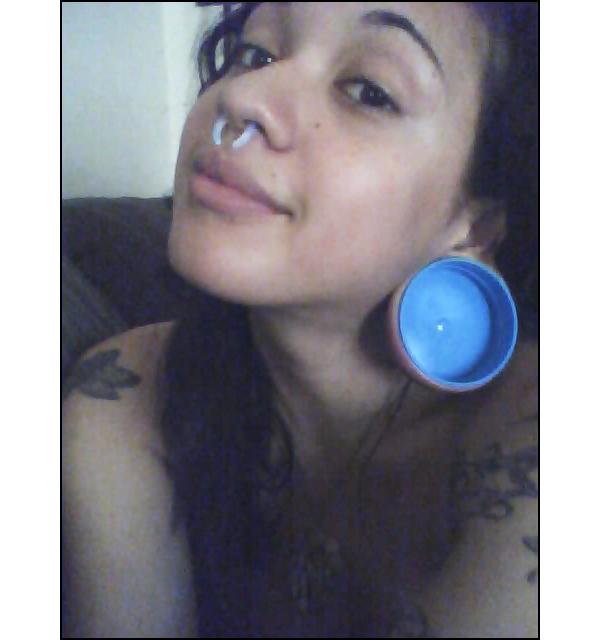

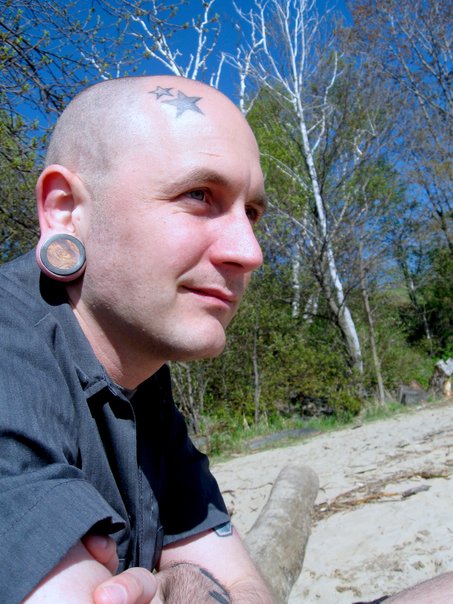
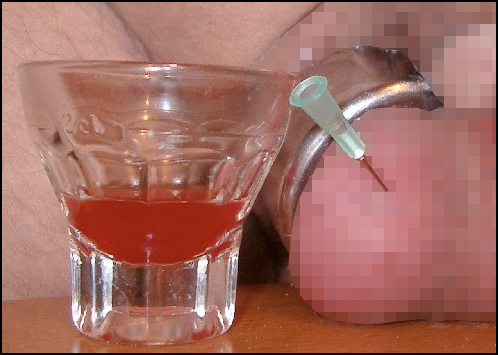


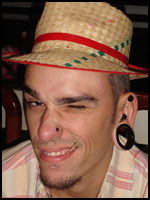
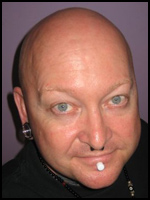

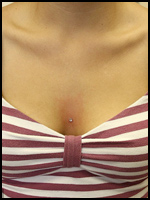
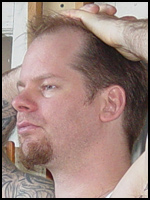
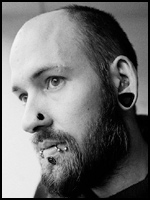
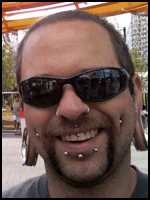
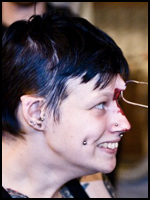




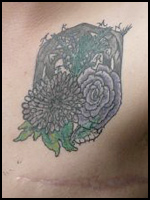

 Metal Faced Yazzy
Metal Faced Yazzy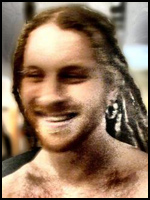
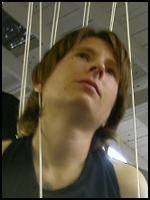
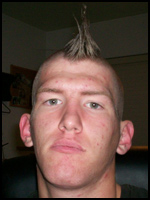
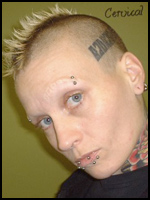


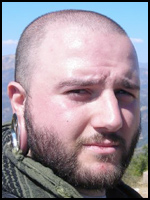
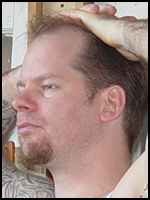

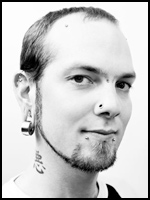
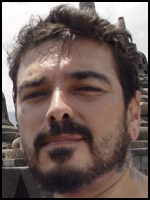
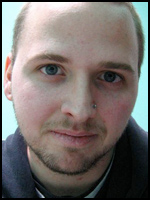
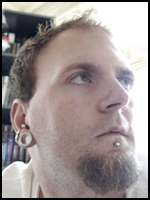

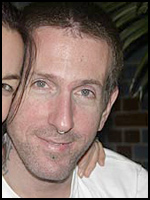



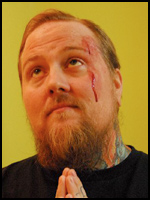
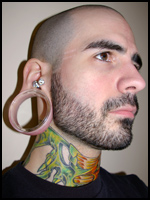
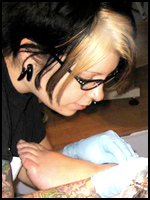

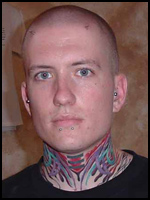
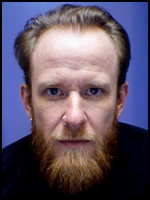
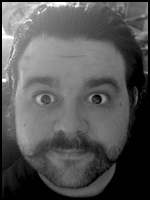

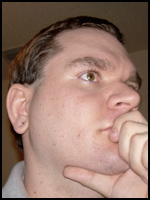 Jason Cartwright
Jason Cartwright